Cause of death Unknown causes Books Klemperer on Music Role Conductor | Name Otto Klemperer Occupation ConductorComposer | |
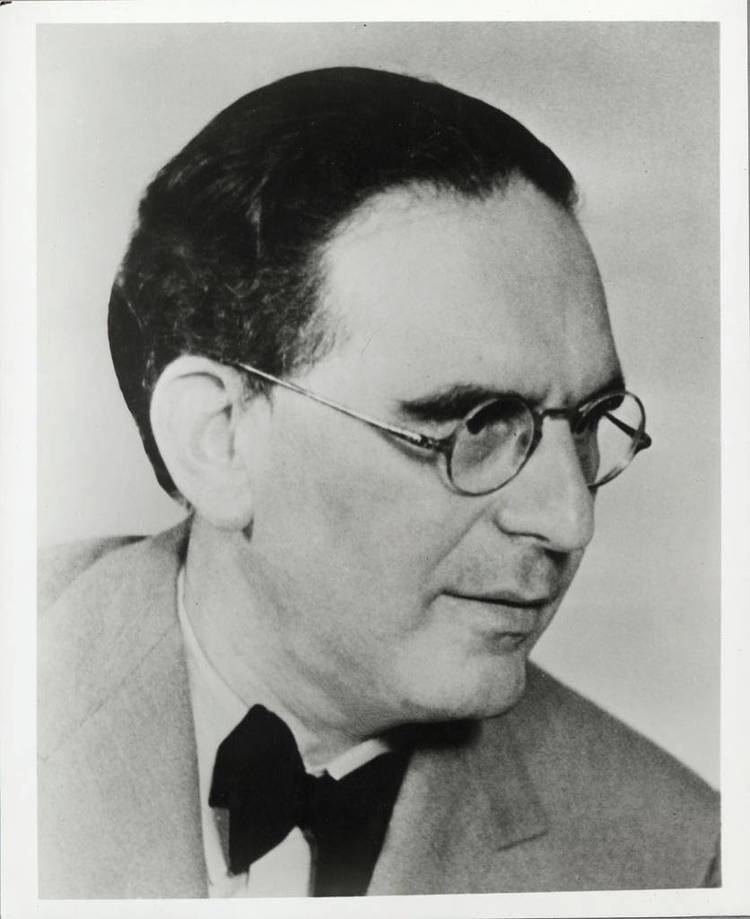 | ||
Born 14 May 1885 ( 1885-05-14 ) Breslau, Silesia Province, Germany Religion Judaism (later converted to Catholicism, later returned to Judaism) Spouse Johanna Geisler (m. 1919–1956) Children Werner Klemperer, Lotte Klemperer Albums Mahler : Das Lied Von Der, Fidelio, Cosi fan tutte, Symphony No 2 "Resurrection", Symphony No 2 in C minor "Re Similar People | ||
Beethoven symphony no 9 1 hour 17 minutes otto klemperer conductor
Otto Nossan Klemperer (14 May 1885 – 6 July 1973) was a German-born conductor and composer. He is widely regarded as one of the leading conductors of the 20th century.
Contents
- Beethoven symphony no 9 1 hour 17 minutes otto klemperer conductor
- BEETHOVEN Symphony No3 Eroica in E flat OTTO KLEMPERER
- Early life
- 1930s move to United States
- The early 1950s and health problems
- His EMI period
- Final years
- Composer
- Klemperers recordings
- Discography
- References
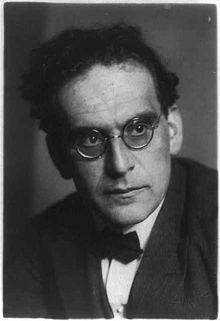
BEETHOVEN Symphony No.3 (Eroica) in E flat OTTO KLEMPERER
Early life
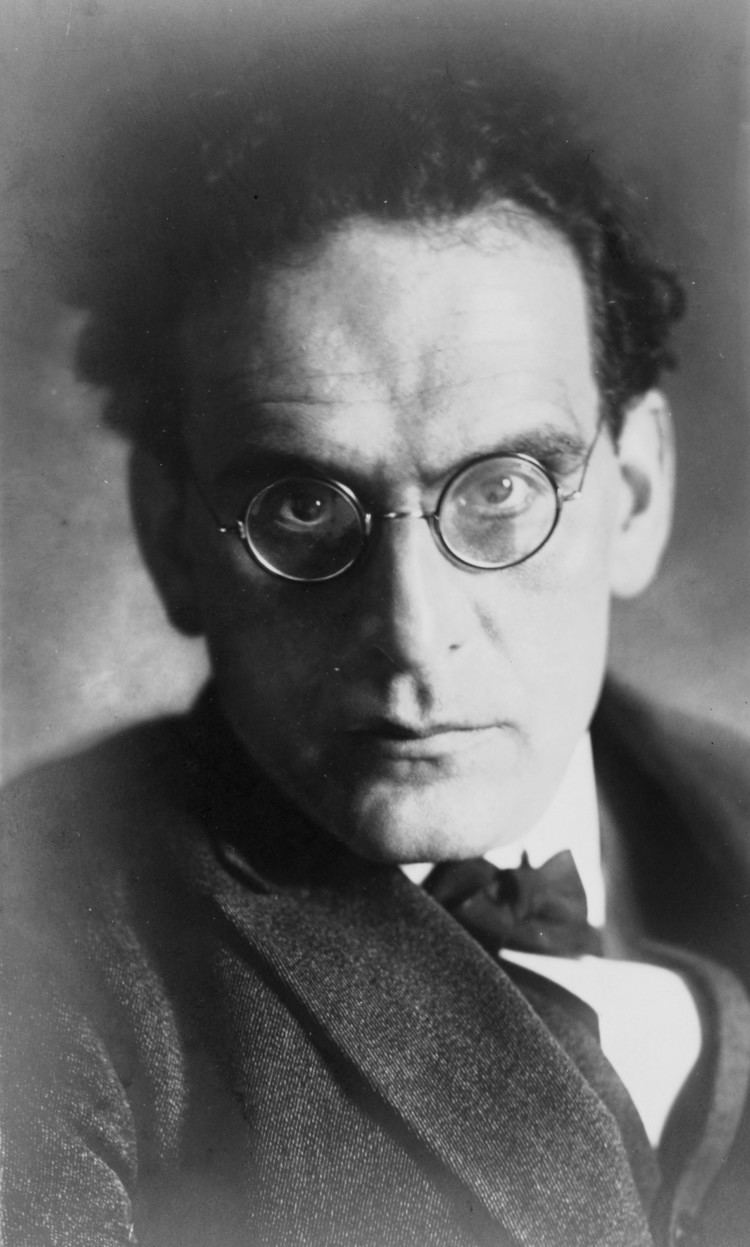
Otto Klemperer was born in Breslau, Silesia Province, then in Germany (now Wrocław, Poland), as a son of Nathan Klemperer, a native of Prague, Bohemia (today's Czech Republic). His parents were Jewish. Klemperer studied music first at the Hoch Conservatory in Frankfurt, and later at the Stern Conservatory in Berlin under James Kwast and Hans Pfitzner. He followed Kwast to three institutions and credited him with the whole basis of his musical development. In 1905, he met Gustav Mahler while conducting the off-stage brass at a performance of Mahler's Symphony No. 2, Resurrection. He also made a piano reduction of the second symphony. The two men became friends, and Klemperer became conductor at the German Opera in Prague in 1907 on Mahler's recommendation. Mahler wrote a short testimonial, recommending Klemperer, on a small card which Klemperer kept for the rest of his life. Later, in 1910, Klemperer assisted Mahler in the premiere of his Symphony No. 8, Symphony of a Thousand.
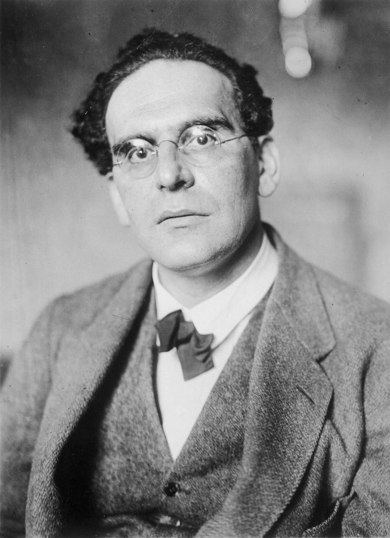
Klemperer went on to hold a number of positions, in Hamburg (1910–1912); in Barmen (1912–1913); the Strasbourg Opera (1914–1917); the Cologne Opera (1917–1924); and the Wiesbaden Opera House (1924–1927). From 1927 to 1931, he was conductor at the Kroll Opera in Berlin. In this post he enhanced his reputation as a champion of new music, playing a number of new works, including Janáček's From the House of the Dead, Schoenberg's Erwartung, Stravinsky's Oedipus rex, and Hindemith's Cardillac.
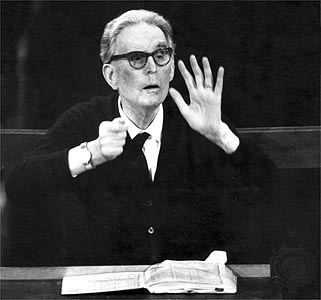
On 22 March 1920, his wife, soprano Johanna Geisler, gave birth to their son, the German-American actor Werner Klemperer. Their daughter Lotte was born on 1 November 1923.
1930s move to United States
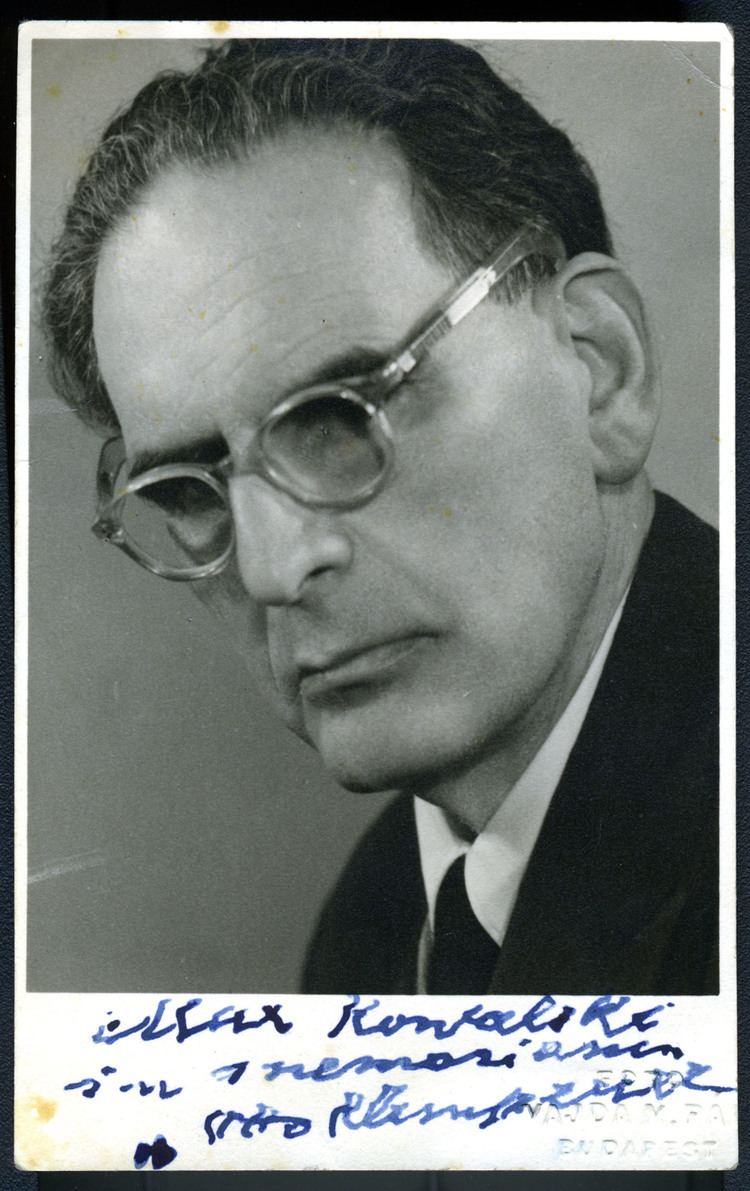
In 1933, once the Nazi Party had reached power, Klemperer left Germany and moved to the United States. He had previously converted to Catholicism, but returned to Judaism at the end of his life. In the U.S. he was appointed Music Director of the Los Angeles Philharmonic. He was granted United States citizenship in 1937. In Los Angeles, he began to concentrate more on the standard works of the Germanic repertoire that would later bring him greatest acclaim, particularly the works of Beethoven, Brahms and Gustav Mahler, though he gave the Los Angeles premieres of some of fellow Los Angeles resident Arnold Schoenberg's works with the Philharmonic. He also visited other countries, including England and Australia. While the orchestra responded well to his leadership, Klemperer had a difficult time adjusting to Southern California, a situation exacerbated by repeated manic-depressive episodes, reportedly as a result of severe cyclothymic bipolar disorder. He also found that the dominant musical culture and leading music critics in the United States were largely out of sympathy with his taste for modern music from Weimar's Golden Age, and he felt he was not properly valued.

Klemperer hoped for a permanent position as lead conductor in New York or Philadelphia. But in 1936 he was passed over for both – first in Philadelphia, where Eugene Ormandy succeeded Leopold Stokowski at the Philadelphia Orchestra, and then in New York, where Arturo Toscanini's departure left a vacancy at the New York Philharmonic but John Barbirolli and Artur Rodziński were engaged in preference to Klemperer. The New York decision was particularly galling, as Klemperer had been engaged to conduct the first fourteen weeks of the New York Philharmonic's 1935-6 season. Klemperer's bitterness at this decision was voiced in a letter he wrote to Arthur Judson, who ran the orchestra: "that the society did not reengage me is the strongest offense, the sharpest insult to me as artist, which I can imagine. You see, I am no youngster. I have a name and a good name. One could not use me in a most difficult season and then expell me. This non-reengagement will have very bad results not only for me in New York but in the whole world... This non-reengagement is an absolutely unjustified wrong done to me by the Philharmonic Society."
Then, after completing the 1939 Los Angeles Philharmonic summer season at the Hollywood Bowl, Klemperer was visiting Boston and was diagnosed with a brain tumor; the subsequent brain surgery to remove "a tumour the size of a small orange" left him partially paralyzed. He went into a depressive state and was placed in institution; when he escaped, The New York Times ran a cover story declaring him missing, and after he was found in New Jersey, a picture of him behind bars was printed in the Herald Tribune. Though he would occasionally conduct the Philharmonic after that, he lost the post of Music Director. Furthermore, his erratic behavior during manic episodes made him an undesirable guest to US orchestras, and the late flowering of his career centered in other countries.
After World War II, Klemperer returned to Europe to work at the Budapest Opera (1947–1950). Finding Communist rule in Hungary increasingly irksome, he became an itinerant conductor, guest conducting the Royal Danish Orchestra, Montreal Symphony Orchestra, Cologne Radio Symphony Orchestra, Concertgebouw Orchestra, and the Philharmonia of London.
The early 1950s and health problems
In the early 1950s Klemperer experienced difficulties arising from his U.S. citizenship. American union policies made it difficult for him to record in Europe, while his left-wing views made him increasingly unpopular with the State Department and FBI: in 1952 the United States refused to renew his passport. In 1954 Klemperer again returned to Europe, and acquired a German passport.
His EMI period
His career was turned around in 1954 by the London-based producer Walter Legge, who recorded Klemperer conducting Beethoven, Brahms and much else with his hand-picked orchestra, the Philharmonia, for the EMI label. He became the first principal conductor of the Philharmonia in 1959. He settled in Switzerland. Klemperer also worked at the Royal Opera House Covent Garden, sometimes stage-directing as well as conducting, as in a 1963 production of Richard Wagner's Lohengrin. He also conducted Mozart's The Magic Flute there in 1962.
A severe fall during a visit to Montreal in 1951 forced Klemperer subsequently to conduct seated in a chair. A severe burning accident further paralyzed him, which resulted from his smoking in bed and trying to douse the flames with the contents of a bottle of spirits of camphor nearby. Through Klemperer's problems with his health, the tireless and unwavering support and assistance of Klemperer's daughter Lotte was crucial to his success.
Final years
One of his last concert tours was to Jerusalem, a couple of years after the Six-Day War, at which time he was awarded an Israeli honorary passport. Klemperer had performed in Israel before it became a state, and returned to Jerusalem only in 1970 to conduct the Israeli Broadcasting Authority Symphonic Orchestra in two concerts, performing the six Brandenburg Concertos of Bach, and Mozart's symphonies 39, 40 and 41. During this tour he took Israeli citizenship. He retired from conducting in 1971.
Klemperer died in Zürich, Switzerland, in 1973, aged 88, and was buried at Zürich's Jewish Cemetery Oberer Friesenberg, owned and provided for by the Jewish Religious Community of Zurich.
He was an Honorary Member (HonRAM) of the Royal Academy of Music.
His son, Werner Klemperer, was a Hollywood actor. The diarist Victor Klemperer, who chronicled his life in the Weimar Republic and Nazi Germany was a cousin, as were Georg Klemperer and Felix Klemperer, who were noted physicians.
Composer
Klemperer is less well known as a composer, but like other famous conductors such as Furtwängler, Walter and Markevitch, he wrote a number of pieces, including six symphonies (only the first two were published), a Mass, nine string quartets, many lieder and the opera Das Ziel. He tried at times to get his works performed, as he had hopes of being remembered as a composer as well as a conductor, but had little success. The works he composed have generally fallen into neglect since his death, although commercial recordings have occasionally been made of some of his symphonic works. Four of his string quartets and a selection of piano pieces and songs have been recorded in two limited edition CDs.
Klemperer's recordings
Many listeners associate Klemperer with slow tempos, but recorded evidence now available on compact disc shows that in earlier years his tempi could be quite a bit faster; the late recordings give a misleading impression. For example, one of Klemperer's most noted performances was of Beethoven's Symphony No. 3, Eroica. Eric Grunin's Eroica Project contains tempo data on 363 recordings of the work from 1924–2007, and includes 10 by Klemperer – some recorded in the studio, most from broadcasts of live concerts. The earliest Klemperer performance on tape was recorded in concert in Cologne in 1954 (when he was 69 years old); the last was in London with the New Philharmonia Orchestra in 1970 (when he was 85). The passing years show a clear trend with respect to tempo: as Klemperer aged, he took slower tempi. In 1954, his first movement lasts 15:18 from beginning to end; in 1970 it lasts 18:41. In 1954 the main tempo of the first movement was about 135 beats per minute, in 1970 it had slowed to about 110 beats per minute. In 1954, the Eroica second movement, "Funeral March", had a timing of 14:35; in 1970, it had slowed to 18:51. Similar slowings took place in the other movements. Around 1954, Herbert von Karajan flew especially to hear Klemperer conduct a performance of the Eroica, and later he said to him: "I have come only to thank you, and say that I hope I shall live to conduct the Funeral March as well as you have done".
Similar, if less extreme, reductions in tempi can be noted in many other works for which Klemperer left multiple recordings, at least in recordings from when he was in his late 70s and his 80s. For example:
(a) Mozart's Symphony No. 38 Prague, another Klemperer specialty. In his concert recording from December 1950 (when he was 65 years old) with the RIAS Berlin Orchestra the timings are I. 9:45 (with repeat timing omitted; the performance actually does take the repeat); II. 7:45; and III. 5.24. In his studio March, 1962 recording of the same work with the Philharmonia (recorded when he was 77 years old), the timings are notably slower: I. 10:53 (no repeat was taken); II. 8.58; III. 6:01. Unlike the late Eroica, the 1962 Prague is not notably slow; rather, the 1950 recording is much faster than most recordings of the work, even by "historically informed" conductors.
(b) Symphony No. 4 Romantic by Anton Bruckner (Haas edition with emendations). A 1947 concert recording with Concertgebouw Orchestra has timings of I. 14:03; II. 12:58; III. 10:11; and IV. 17.48. The EMI studio recording with the Philharmonia from 1963 has timings of I. 16:09; II; 14:00; III. 11.48; IV. 19:01. Again, the 1963 is not a notably slow performance, but the 1947 was quick. The March 1951 recording with the Vienna Symphony Orchestra was even quicker: I. 13:26; II. 11:56; III. 9:22; IV. 16:30.
(c) Symphony No. 7, Nachtlied (Song of the Night) by Gustav Mahler recorded for EMI in 1968. I. 27:43; II. 22:06; III. 10:27; IV. 15:41; V. 24:15. Klemperer's finale is particularly slow-paced at 24:15, where the average timing is approx. 17:30. Compare Klemperer's tempi with Sir Georg Solti for Decca (1971) at 16:29; James Levine for RCA (1982) at 17:45; Claudio Abbado for DG (2002) also at 17:45 and the Michael Tilson Thomas 2005 performance with the San Francisco SO at 18:05. "Thus, as you listen to this performance, it seems... to enclose you within its own world of evocative sound, a world that echoes... the world we may know, but remains a world transformed by imagination, remote, and complete within itself."
Regardless of tempo, Klemperer's performances often maintain great intensity, and are richly detailed. Eric Grunin, in a commentary on the "opinions" page of his Eroica Project, notes: "....The massiveness of the first movement of the Eroica is real, but is not its main claim on our attention. That honor goes to its astonishing story (structure), and what is to me most unique about Klemperer is that his understanding of the structure remains unchanged no matter what his tempo... ". The German works of Kurt Weill were amongst Klemperer's favorites and he encouraged Weill to compose the orchestral suite Kleine Dreigroschenmusik.
Discography
Klemperer made many recordings that have become classics. Among those worthy of note are:
A list of historical recordings of the Los Angeles Philharmonic with Klemperer conducting (including parts of the George Gershwin Memorial Concert at the Hollywood Bowl) can be found here: Otto Klemperer conducting the Los Angeles Philharmonic
Klemperer's last recording, of Mozart's Serenade in E-flat, K.375, was made on September 28, 1971, the last time he led an orchestra.
